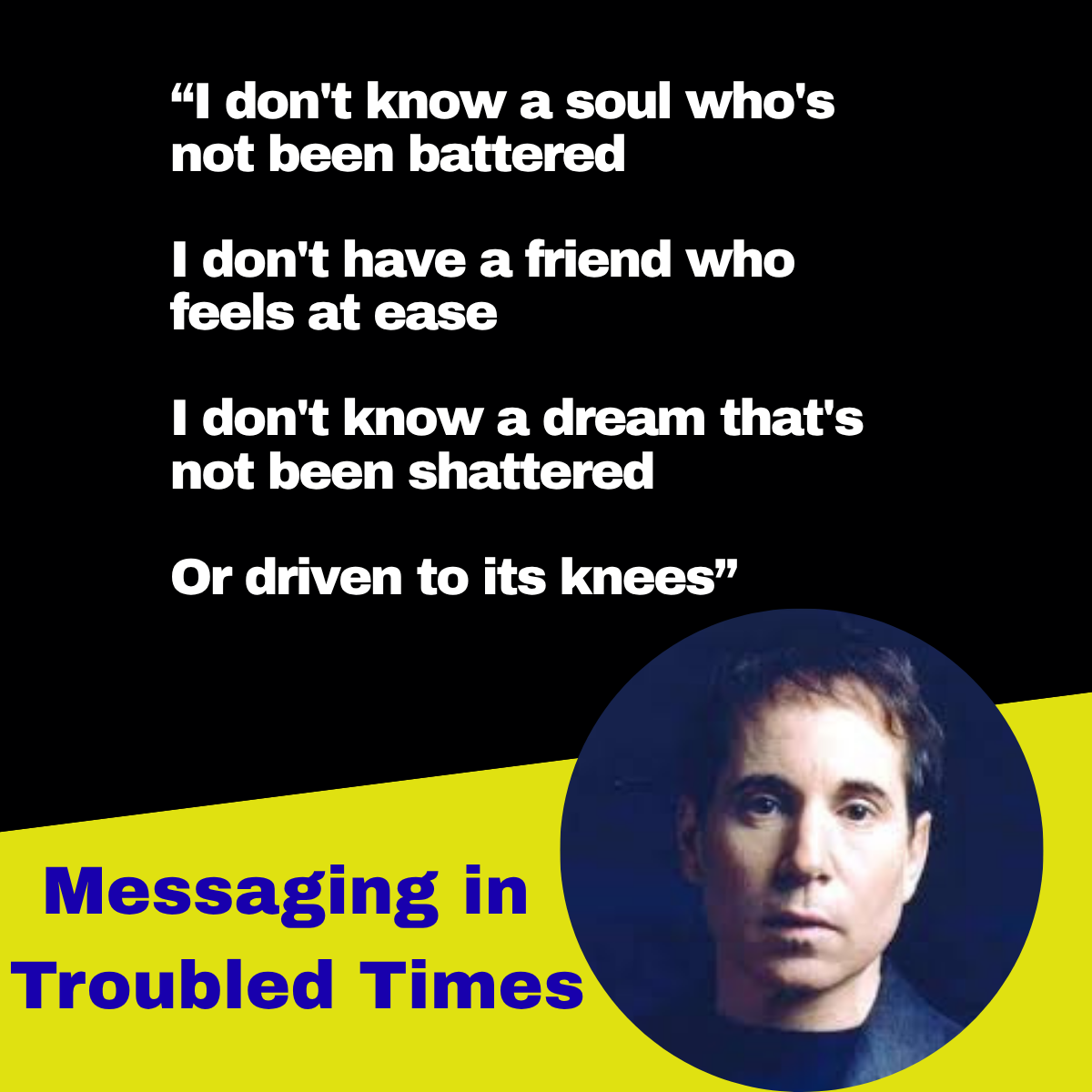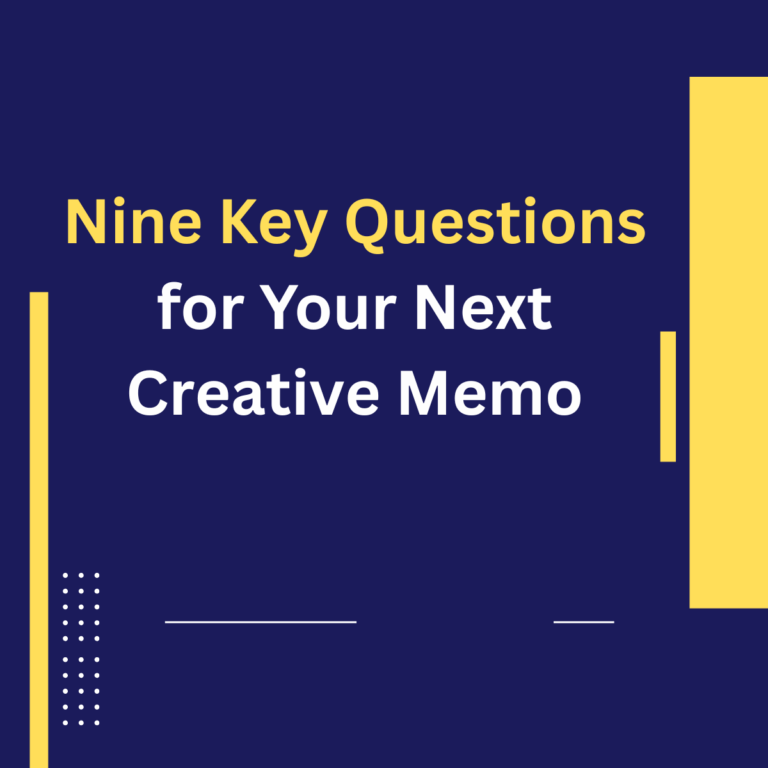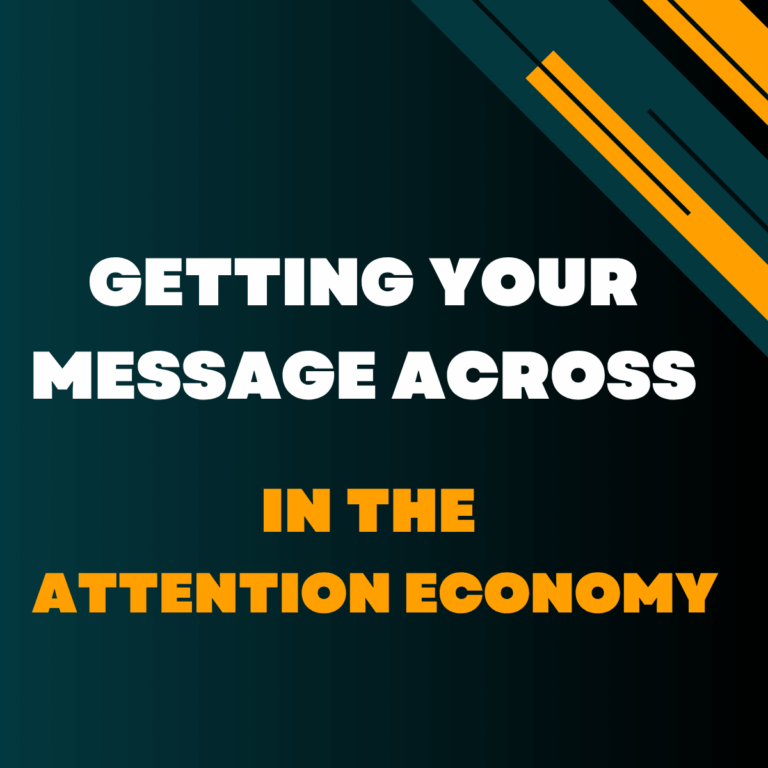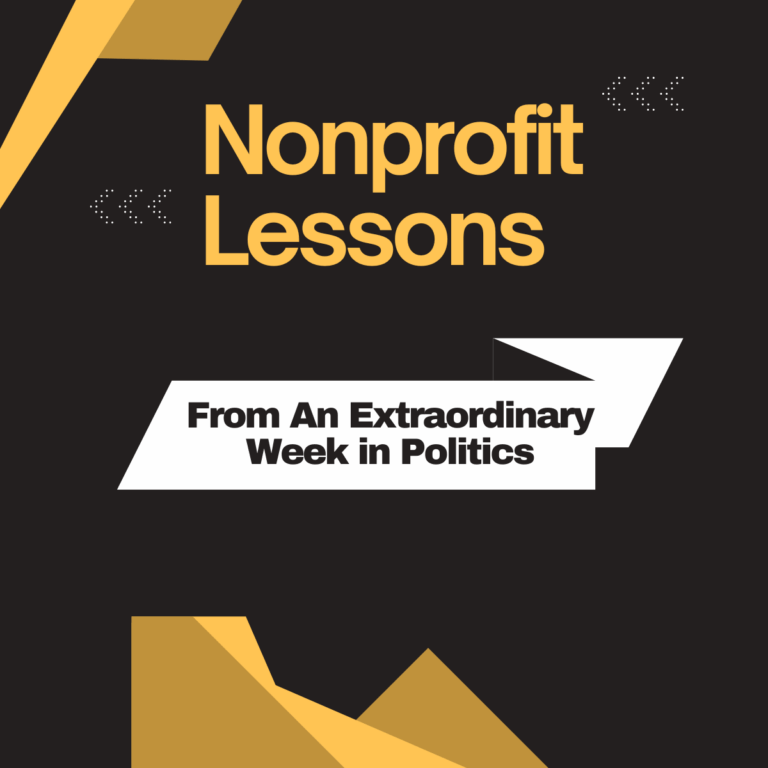Paul Simon wrote the above lyrics nearly 50 years ago. But as the Los Angeles Times notes, his “lament to a country that had lost its way” resonates in today’s “bruised and divided America.”
With three and a half years left in Trump 2.0, our nonprofit audiences are dealing with a difficult mix of emotions: Anger at what Trump is doing to the country. Fear about what will come next. Frustration at the failure of institutions (from the Supreme Court to the Democratic Party) to rise to the occasion. Determination to keep fighting. And a fraying strand of hope that we can somehow make it through.
In today’s post, some thoughts about how to communicate effectively in such a troubling emotional landscape. First, let’s take a closer look at that landscape based on a recent Navigator Research survey.
Anxious. Discouraged. Exhausted. Angry. Scared.
Navigator asked respondents to choose up to five emotions from a mix of 13 negative and positive emotions about politics. The five emotions listed above – all negative ones — were the top ones mentioned.
The first positive emotion, “hopeful” didn’t surface until sixth place.
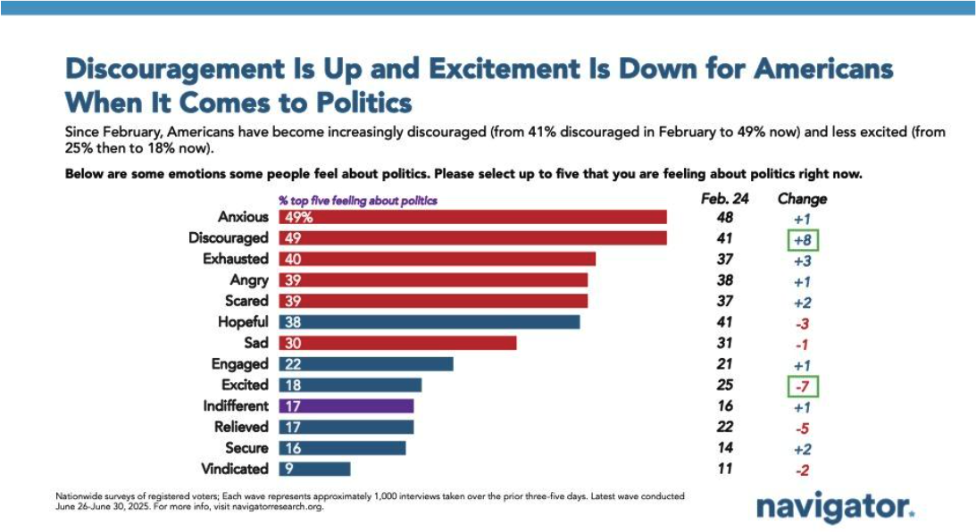
When the report zeroes in on Democrats, the percentage of people choosing negative emotions jumps even higher and positive emotions trend lower.
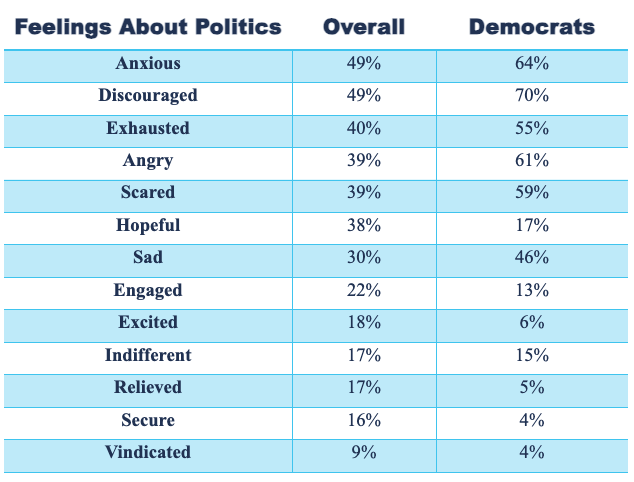

It’s a tough environment to communicate in. And in contexts like this, we need to be especially thoughtful, strategic and intentional in our messaging. No one has all the answers. But here are five guidelines I recommend.

I often offer this advice: Remember that in challenging times, our audiences count on us to lead with confidence, not wallow in despair along with them. In the current context, that feels a little flip.
Here’s why. When peoples’ emotions are as raw and stark as they are right now, we can’t just steamroll past them. I’m still not advocating wallowing along. But if we want to have authentic conversations, we have to first recognize and validate how people are feeling.
A “validate, but don’t replicate” approach begins by recognizing how tough and challenging things are. Only then, can you authentically turn to rallying people to the cause and showing them a way forward.
Language Examples
“Together we will prove that, even in the darkest times, our commitment to freedom, justice and equality will never yield. Love can overcome hate, and hope can overcome despair.”
“I’ve never been prouder of our community. Where others might give in, we press forward. Where others might throw up their hands, we redouble our effort. And that’s exactly what it’s going to take in the weeks ahead.”

This may seem counter intuitive. But one of the best ways to counter Trump is to ignore him sometimes. We need to resist his efforts to “flood the zone” and dominate the conversation. (Significantly, he is having unusual difficulty right now shifting the conversation away from the Epstein files controversy.)
I’m not arguing for ignoring the presidential elephant in the room – just for avoiding a reflexive instinct to make everything about Trump.
Framing Examples
Can that appeal about cancer research cutbacks be more about what it will mean to future cancer patients if the money is restored and less a diatribe about how evil Trump is for making the cuts?
Is it better to sometimes challenge politicians for ignoring peoples’ needs as opposed to taking them on for lining up with Trump?
Would it be wiser to frame that next gun violence message around state by state legislative battles as opposed to doing another Trump-focused appeal?

If you’re feeling down and discouraged, hearing the same depressing story over and over isn’t going to help. But that’s the trap too many organizations are falling into in 2025.
The details may change but the storyline is awkwardly familiar: Trump is doing something really awful. It’s an uphill fight, but we’re trying to stop him. We need your help.
Persuasive storytelling relies on narrative arc and that implies movement.
Ways to Avoid A Static Storyline
Test yourself by asking questions like these:
- How different is the next message from the one that preceded it?
- What’s changed since the last time you communicated?
Could the new message be sent at any time or is it well-anchored in a specific moment?

Trump provides a surplus of things to declare we are against. Affirmative aspirations are not only helpful in avoiding a total focus on Trump. They also serve to remind our audiences they are fighting for positive movement forward.
The guidance and language examples on this front come from a recent Alexandria Ocasio-Cortez message.
Language Example
“It’s important for us to hold the corruption of this administration accountable, but we also have to have an alternative vision.
And it can’t just be, “Not that.”
If it’s not ‘that’, then ‘what’ is it.
For me, my “what” is raising the federal minimum wage to a living wage.
My “what” is guaranteed healthcare for every American and catching up with the rest of the world.
My “what” is making public colleges and universities tuition free.”
My “what” is actually having a real path to citizenship in the United States.

Given all they are being asked to absorb, we need to seize opportunities to make our audiences feel good about their ability to stay active in tough circumstances.
Remember that people support our causes, in part, as a way to express and verify their personal identity. They see themselves as people committed to fighting for what they believe in. Acknowledging their steadfast ability to do that through thick and thin has to be a big element in our conversation.
Language Examples
“The past seven months have been beyond challenging. But you’ve shown the commitment, fortitude and strength to keep pushing back and pressing forward.”
“Your steadfast commitment to our cause has never been more important or more evident than in this, the biggest test we’ve ever faced. That’s what gives me hope for a brighter future.”

As noted at the outset, countering the negative emotions that are dominating peoples’ lives is no easy task. But it is an essential one.
And the more deliberate, intentional and thoughtful we are in shaping these conversations, the better we will be able to navigate the “bruised and divided America” Paul Simon spoke to in a different context decades ago.


